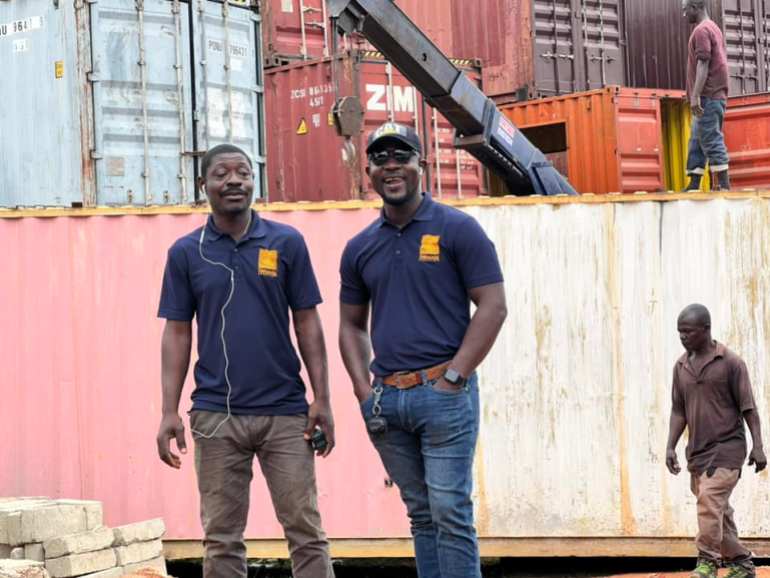Clad in sturdy work boots caked with dust from the floor, his worn jeans bear the marks of many hours spent amid the concrete and steel and a high-visibility vest drapes over his shoulders.
Amid stacks of shipping containers and the hum of heavy machinery, his voice rises above the noise, issuing directives to his employees.
For him, this is more than just a construction site; here, discarded shipping containers are transformed into eco-friendly homes, offering a potential solution to the West African country’s housing crisis.
“This is more than a business; it’s a movement,” he declares.
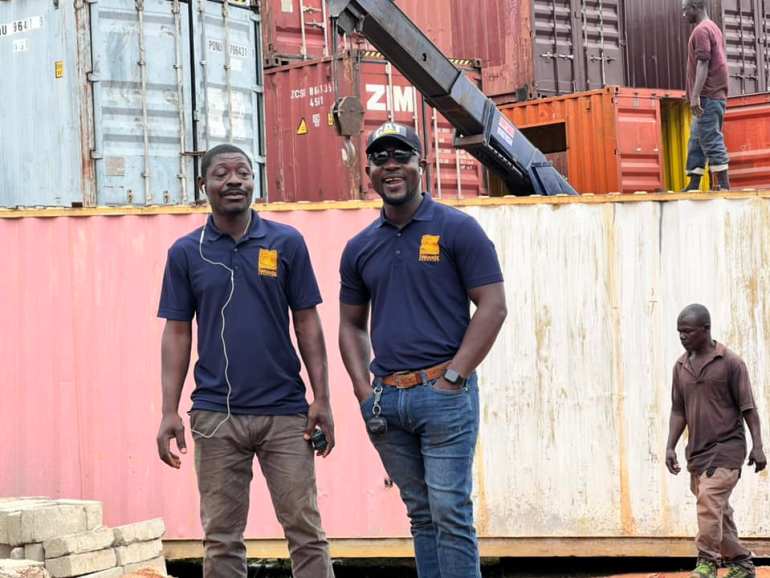
Ghana’s housing crisis has been building for some time. The Ghana Statistical Service has reported that approximately six million of Ghana’s 33 million population are in urgent need of housing.
Some of these people are homeless but most are living in dangerously overcrowded slums which have grown up over time on the edge of Ghana’s larger towns. The population living in slums surged from 5.5 million in 2017 to 8.8 million by 2020, the most recent count by the United Nations.
One reason for this is rapid urbanisation, driven by both rural-to-urban migration and natural population growth. As more people move to urban areas in search of economic opportunities, the demand for housing surpasses the available supply, leading to the proliferation of informal settlements and slums.
Additionally, economic challenges and limited access to financing have hindered many Ghanaians from buying or building homes.
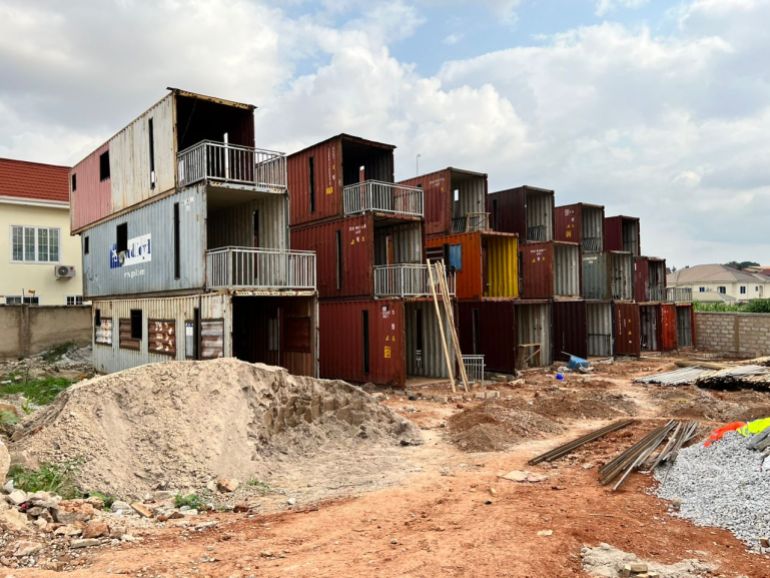
This new venture aims not only to address the immediate need for housing, but also to present a more affordable and sustainable living model.
“As we confront Ghana’s staggering housing deficit, it’s imperative to offer more than mere structures; we must present a vision for sustainable living,” Gyimah says.
“We are not only providing shelter but also saving the environment for the future generation. While paving the way for sustainable living models, we aspire to create a lasting impact, one home at a time.”
The birth of an idea
Growing up with 17 siblings in Akim Swedru – 180km (112 miles) from the capital, Accra – in eastern Ghana, Gyimah says he dreamed of becoming either a banker or an artist.
But Gyimah’s interest in sustainability was deeply rooted in his upbringing in a region known for its rainforests, streams, hills and rivers. He saw the rapid deforestation and destruction of wildlife habitats caused by construction and illegal mining. So, despite having studied banking and finance, he decided to pursue his passion for carpentry.
His journey into home design began with a simple idea; producing stylish accommodation for pets, especially dogs – “for them to live a better life”, he says. He quickly stepped up to designing homes for people when he was struck by the idea of reusing shipping containers.
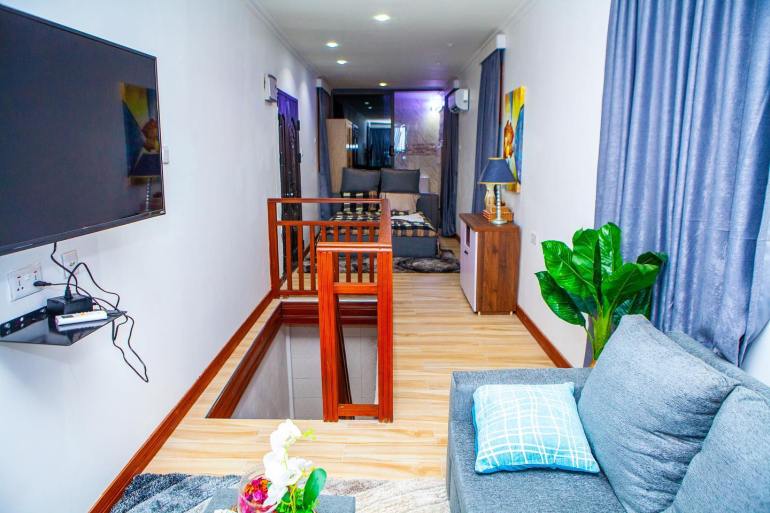
“I settled on repurposing shipping containers, typically discarded after their maritime service life, into chic and comfortable living spaces for people to live in,” the father of three tells Al Jazeera.
Affordability is paramount if his venture is to have a hope of making any sort of impact on Ghana’s need for housing. Therefore, his homes are primarily aimed at individuals and families seeking affordable yet sustainable living solutions. The cost of these homes varies depending on the design, with the simplest options ranging from $7,000 to $10,000. “This amount is just for the structure, excluding furnishing,” he adds.
More complex designs with fully fitted kitchens and bathrooms, spread over several storeys, cost as much as $35,000, but, compared with a traditional bricks-and-mortar design, these homes still cost a good deal less.
According to the Ghana Real Estate Developers Association, it can cost between $50,000 to $70,000 to build a new two-bedroom, bricks-and-mortar house.
According to Ghana Property Centre, a one or two-bedroom house in the capital city of Accra costs about $100,000. A shipping container home, by contrast, “is cost-effective as compared to the traditional concrete structures … We want to make it possible for a lot of people to own homes in Ghana,” Gyimah says.
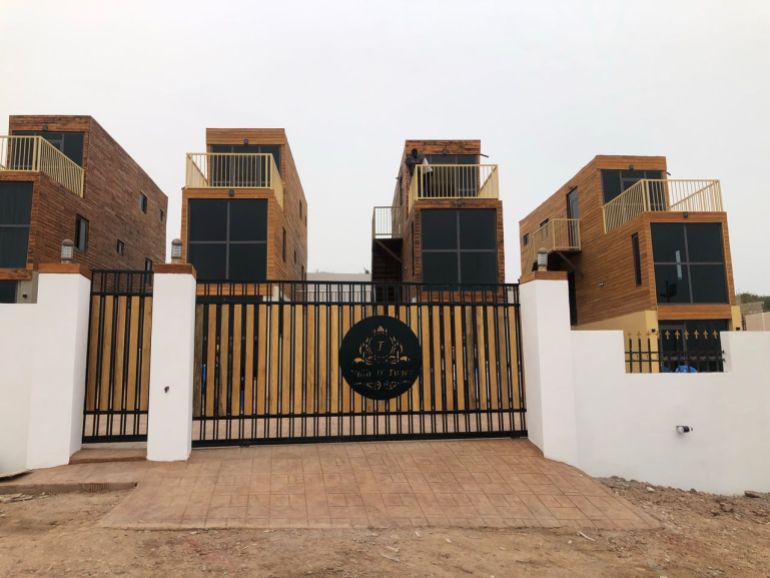
By contrast to bricks and mortar, shipping container homes can be constructed quickly. While very simple shipping container home designs can be completed in a few weeks, more complex layouts can take up to a year to build.
“It’s not time-consuming,” he says. “On top of it, the materials used in building these shipping houses are eco-friendly. Ultimately, it is mobile. You’d have saved 30 percent of what you would have spent on block buildings. It saves a lot of land space, too.”
“Starting small with just one refurbished shipping container for my office in 2019 was just the beginning,” Gyimah says. Since then, the business, IWoodz Creation, has grown, now employing 25 local staff.
As well as the 52 individual homes it has built, the group also turns decommissioned shipping containers into stores, offices and cafes.
In order to use less energy, these homes use natural ventilation through more strategic placement of windows and vents which dissipate heat more efficiently, Gyimah explains, “reducing the need for energy-intensive cooling systems like air conditioners”.
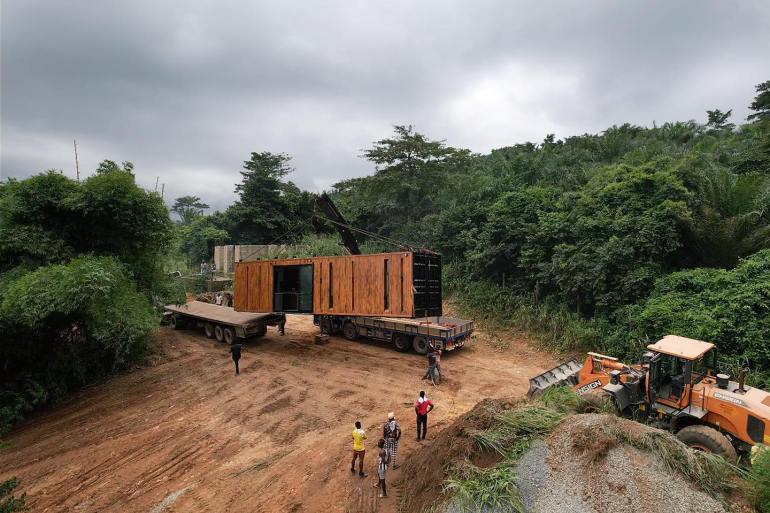
Too little, too late?
Gyimah’s approach has been criticised by some, however. While the environmental benefits are clear, planning experts say solutions such as this will likely only have a small effect on Ghana’s housing problem. It is also unclear how long these sorts of homes will last, although Gyimah says they should last as well as conventional houses do as long as they are maintained properly.
“While repurposing shipping containers into homes may seem like an innovative solution to Ghana’s housing crisis, we must approach it with caution,” Accra-based town planner Abrahim Sowah-Dei says. “While these structures offer a quick and cost-effective way to provide shelter, they may not necessarily address the root causes of the housing shortage.
“We must ensure that these container homes are integrated into comprehensive urban planning strategies that prioritise long-term sustainability and community wellbeing.”
Housing activist Mohammed Awal, who advocates for affordable housing and tenants’ rights in Ghana, said container homes should not just be a “cheap” option for poorer residents. “Container homes must meet adequate standards of safety, comfort, and dignity for residents. Additionally, we must ensure that marginalised communities are not further marginalised by relegating them to container housing solutions.”
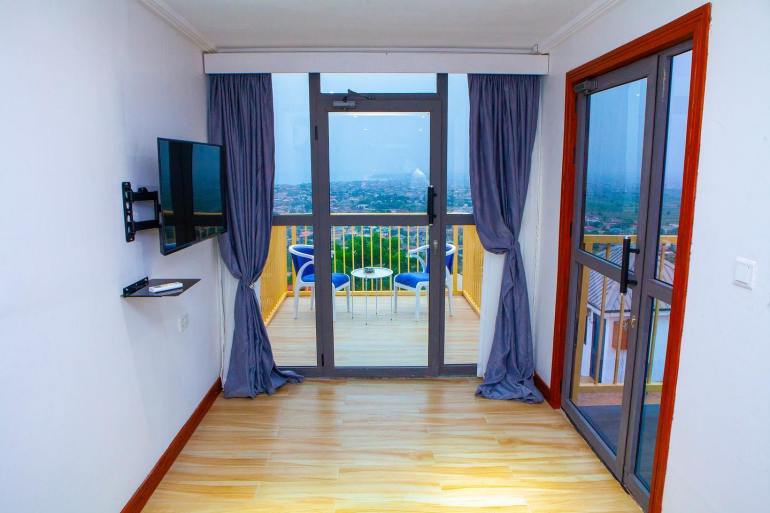
Despite these concerns, Felix Asante, a 45-year-old married father of two young children, says he is extremely happy with his family’s new three-bedroom, shipping container home.
He could not have hoped to buy a similar-sized bricks-and-mortar property on the budget he had, he says. “I spent close to 40 percent less ($18,000) than if I were doing the traditional concrete house with the same size and style.”
The home has its own small garden, spacious living area and a lot of natural light, he adds, as well as good insulation and solar panels for energy.
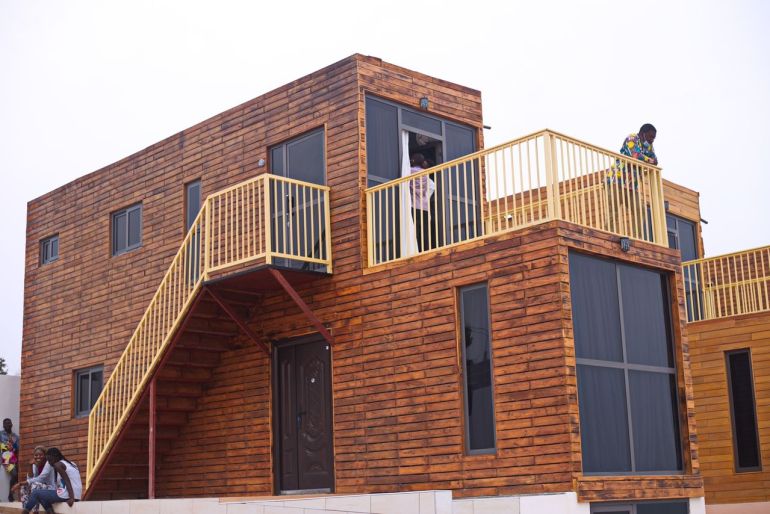
Next stop – helping flood victims
In October 2023, the Akosombo dam, a hydroelectric dam which generates electricity for most of Ghana’s 16 regions as well as for neighbouring Togo and Benin, burst.
Situated on the Volta River in the Akosombo Gorge in southeastern Ghana, the dam is on Lake Volta, which was created when it was constructed.
When it ruptured last year, devastating floods displaced more than 40,000 people, including a significant number of children, who are among the most vulnerable in such situations, as highlighted by the UN in Ghana. These floods not only led to the loss of homes and belongings but also disrupted livelihoods and access to essential services like education in three regions. Schools in affected communities were either destroyed or rendered inaccessible, halting education for many children who now rely on support from organisations and individuals for survival.
Moved by the plight of those affected by the flooding, Gyimah is exploring ways to leverage his business to address the pressing need for housing solutions for displaced victims. He envisions collaborating with disaster management organisations to pioneer the construction of mobile and decent housing solutions for displaced victims. He envisions these mobile homes not just as shelters, but as “symbols of resilience and hope” for those affected by natural disasters.
“I am looking at constructing safe havens with the shipping containers in areas where flooding is an issue. They can serve as temporary shelters for displaced persons, especially women and children or even classrooms for children in disaster situations,” Gyimah said.
